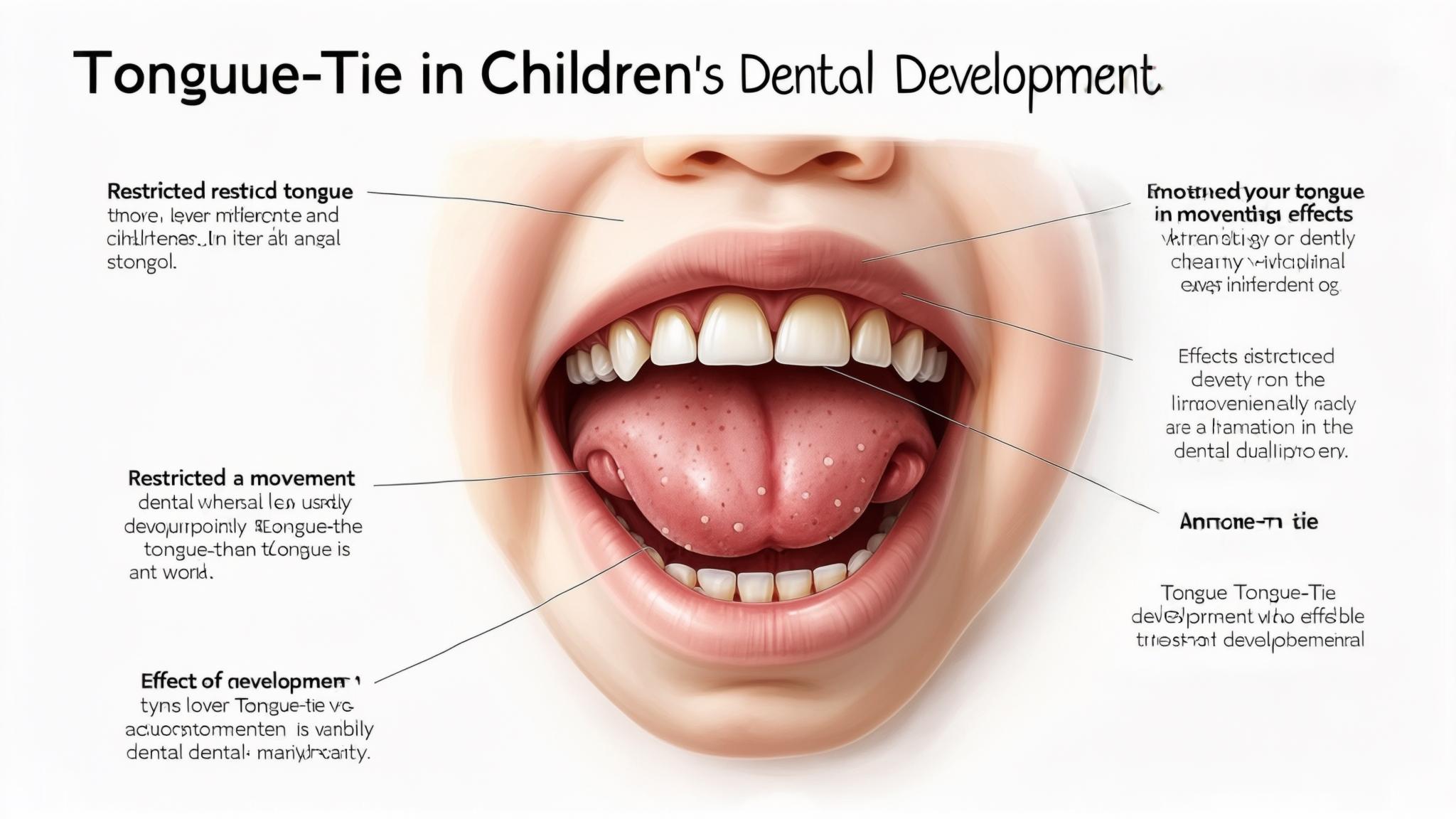Understanding Tongue-Tie
Tongue-tie, medically known as ankyloglossia, is a condition present at birth that restricts the tongue's range of motion. This occurs when the lingual frenulum, the small fold of tissue that connects the underside of the tongue to the floor of the mouth, is shorter or tighter than usual. Tongue-tie can vary in severity, ranging from mild cases where the tongue is slightly restricted, to severe cases where the tongue is almost completely tethered to the floor of the mouth. It's important to understand this condition as it can significantly impact a child's oral and speech development.
Impact of Tongue-Tie on Oral Health
A restricted tongue can make maintaining oral hygiene challenging for children. When the tongue cannot move freely, it becomes difficult to effectively clean food particles from the teeth and gums, increasing the risk of dental caries (cavities) and gum disease. Furthermore, tongue-tie can affect the alignment of teeth and the development of the jaw. The tongue plays a crucial role in the natural positioning of teeth; a restricted tongue can lead to misalignment and other dental complications as the child grows.
Impact of Tongue-Tie on Speech Development
Speech development is a critical part of a child's growth, and a tongue-tie can interfere with this process. Normally, children begin to form sounds and words as they grow, but a tied tongue can make it difficult to articulate certain sounds, such as "t," "d," "l," and "th." This can lead to speech delays or disorders, making it essential for parents and caregivers to be vigilant. For instance, a child with tongue-tie might struggle to pronounce "the" as "de," which can impact their communication skills and confidence.
Diagnosis of Tongue-Tie
Recognizing the signs of tongue-tie early is crucial. Parents might notice that their child has difficulty breastfeeding, experiences speech delays, or struggles with oral hygiene. Pediatricians, dentists, and speech therapists play a vital role in diagnosing tongue-tie. They assess the degree of restriction and its impact on the child's oral and speech functions. Early detection allows for timely intervention, which can significantly improve outcomes.
Treatment Options for Tongue-Tie
Treatment for tongue-tie varies depending on the severity of the condition. In some cases, non-surgical approaches such as exercises and therapy might be sufficient. However, more severe cases may require a surgical procedure known as a frenectomy or frenuloplasty. These procedures involve releasing the frenulum to allow greater tongue mobility. Surgery is usually quick and recovery is straightforward, but follow-up care, including speech therapy, can be essential to help the child adapt to their new range of motion.
Prevention and Management
While tongue-tie cannot be prevented, managing its effects is crucial. Parents should monitor their child's oral and speech development closely and ensure regular dental check-ups. Encouraging good oral hygiene practices from an early age can help mitigate some of the risks associated with tongue-tie. Being proactive and seeking professional advice if any concerns arise can lead to better health outcomes for the child.
Conclusion
Recognizing and addressing tongue-tie is essential for ensuring a child's healthy oral and speech development. Parents are encouraged to seek professional advice if they suspect their child might have tongue-tie, as early intervention can make a significant difference. Remember, holistic care and regular check-ups are key to supporting your child's overall health and well-being.
References
- American Academy of Pediatrics
- Journal of the American Dental Association
- Speech-Language & Hearing Association

